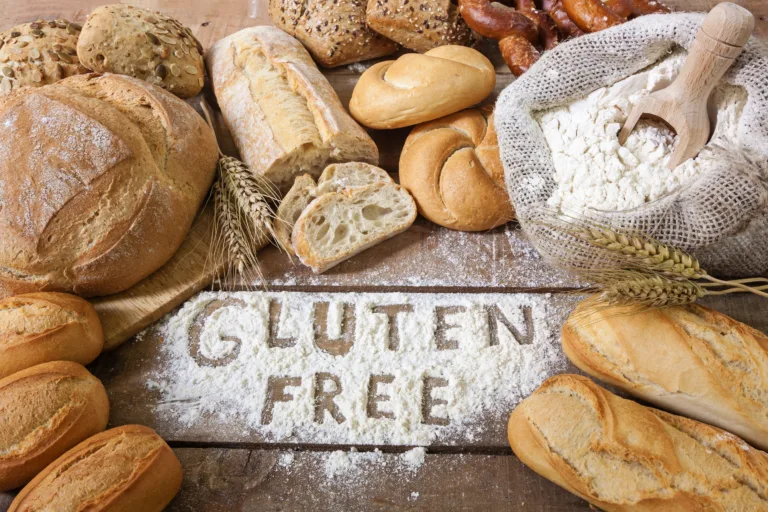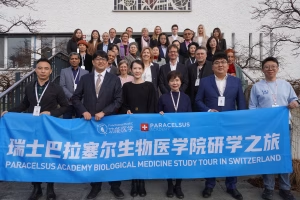Inhaltsverzeichnis
Have you ever wondered how big an impact nutrition really has on your health?
At the Paracelsus Lustmühle Clinic, we see every day how powerfully the right diet can support recovery. Since 1958, we have been offering a plant-based, holistic diet in our Culinarium “Zum Winkelstein”, which not only supplies patients but also our clinic team. As one of the first clinics to put this approach at the heart of treatment, we have already been able to help many people – and are still achieving impressive results today.
Our Paracelsus detox diet is at the heart of our nutritional therapy and is based on the three pillars of our holistic medical approach. Read on to find out how we use this special diet to break down toxins, strengthen the gut and enable the body to regenerate sustainably.
What is the Paracelsus Relief Diet and why is it so effective?
The Paracelsus Relief Diet is the result of years of research and experience in the field of biological medicine. It combines plant-based, hypoallergenic foods with a targeted nutritional therapy developed especially for people with chronic illnesses. Our experience shows that the diet is based on the pillars of the Paracelsus 3-pillar approach, which provide effective and sustainable support:
1. detoxification: cleansing the body from the inside
Why detoxification? We are exposed to a variety of pollutants every day – be it environmental toxins, heavy metals or metabolic waste. The Paracelsus Detox Diet is designed to effectively detoxify the body while relieving the liver and other vital organs. Here are some of the benefits:
- Reduced toxin load: Plant-based foods prevent the accumulation of harmful substances that are often found in animal products or fish.
- Promotes liver function: Chlorophyll and other secondary plant substances support the liver in its detoxification work and help to cleanse the body’s internal environment.
This conscious diet creates the ideal basis for better health and actively supports the body in breaking down harmful substances and creating a healthy balance.
2. healthy gut and strong immune system: avoid allergens, strengthen gut flora
Why is gut health so important? A healthy gut is the center of our well-being. Our Paracelsus relief diet focuses on hypoallergenic, anti-inflammatory foods that relieve the immune system and strengthen the intestinal flora – an essential step in alleviating chronic illnesses and stabilizing long-term health.
- Hypoallergenic: By avoiding dairy products, gluten and other common allergens, the immune system is relieved.
- Support of the intestinal flora: Soluble fiber, short-chain fatty acids (SCFAs), vitamin A, zinc and L-glutamine contribute to the healing of the intestinal mucosa and help to alleviate leaky gut syndrome.
- Anti-inflammatory: The plant-based, anti-inflammatory food supports the intestinal mucosa and reduces systemic inflammation.
By strengthening the intestines and the immune system, the Paracelsus detox diet creates the basis for sustainable health and the prevention of chronic diseases.
3. regeneration and build-up: Nutrients for the body
Why is regeneration so important? For holistic healing, it is crucial that the body is not only cleansed and strengthened, but also rebuilt. The Paracelsus detox diet focuses on nutrient-rich, vegan dishes that do just that:
- Nutrient-rich food: Our plant-based, gluten-free dishes provide essential vitamins, minerals and trace elements that support the metabolism and stimulate cell regeneration.
- Restoring internal balance: Nutrition helps to balance the internal environment and regenerate and regulate the diversity of the microbiome.
- Support for other therapies: By relieving the liver and other organs, the Paracelsus Relief Diet also improves the effect of other therapeutic measures that we offer at the clinic.
This approach promotes physical and mental regeneration and forms the foundation for long-term health and well-being.
Why we avoid animal protein at the Paracelsus Clinic
The Paracelsus detox diet is therefore based on a careful selection of foods that detoxify the body, strengthen the intestines and promote regeneration. Why we avoid certain foods such as animal protein is explained below.
1. meat and fish are the main sources of accumulated toxins
Meat and fish often contain high levels of accumulated toxins, especially due to today’s industrial animal husbandry. Animals are often kept in cramped conditions, fed highly processed feed and are also overloaded with antibiotics, vaccines, pesticides and toxins (e.g. aflatoxin) from corn, soy and grain feed. These substances accumulate in the animals’ tissue and thus enter the human food chain (1). If you want to detox, it is recommended that you avoid meat for as long as possible, even if it is “organic” or “biological”.
Toxins in fish

Fish pose a particular challenge due to the food chain: Fish that eat other fish accumulate more and more toxins in their tissue.
Methylmercury: A highly toxic form of mercury that accumulates in the muscle tissue of fish. High levels are found particularly in larger fish such as sharks, swordfish, king mackerel and tuna.
Polychlorinated biphenyls (PCBs): Industrial chemicals that have been banned in many countries but are still circulating in the environment. PCBs can accumulate in the fat of fish and are found in both freshwater and marine fish.
Dioxins: Highly toxic compounds resulting from industrial processes and the burning of organic materials. Dioxins accumulate in the fatty tissue of fish and can cause reproductive and developmental problems, damage the immune system, disrupt hormones and cause cancer.
Dibenzofurans: These compounds are related to dioxins and are also formed as by-products of industrial processes and waste incineration. They are considered environmental toxins and can accumulate in fish fat.
DDT and its metabolites (DDE and DDD): These pesticides were widely used until their harmful environmental effects became known and they were banned. However, they can still be detected in the environment and are still present in fish.
Chlordane: Another chlorinated pesticide that has been banned but remains in the environment and can be found in fish.
Polybrominated diphenyl ethers (PBDEs): Flame retardants found in various consumer products. They have been found in the environment, including in fish, and can disrupt thyroid hormones and cause neurodevelopmental problems.
Perfluorinated compounds (PFCs): Chemicals used in various industrial applications and items, such as non-stick cookware and waterproof clothing. PFCs circulate in the environment and have been detected in fish, where they can accumulate.
Arsenic, cadmium, lead: heavy metals can contaminate fish through environmental pollution. Exposure can cause organ damage and neurological diseases.
Organochlorine compounds: A class of chemicals that includes PCBs and certain pesticides. These compounds bioaccumulate in fish.
Polycyclic aromatic hydrocarbons (PAHs): By-products of the incomplete combustion of organic materials. They can occur in water and sediments and accumulate in fish. Some PAHs are known carcinogens.
Mycotoxins: Toxins produced by fungi that can contaminate fish feed, especially in aquaculture. They impair fish health and can be transferred to humans.
2. red and processed meat increases the risk of cancer
The World Health Organization (WHO) has classified processed and red meat as carcinogenic (2). Meats such as ham, salami and beef belong to the Group 1 category, which significantly increases the risk of cancer – comparable to the risk from smoking or alcohol (2). The risk of bowel and stomach cancer in particular is increased by eating processed meat (3, 4).
3. excess protein burdens the body
Although meat and fish are considered protein-rich foods, an excess of animal protein can overload the body. In the Western world, the average person consumes about 130 grams of protein per day, of which only about 50-70 grams can be processed (5). Excess protein cannot be stored and must therefore be broken down. This produces metabolic waste products such as ammonia, which burden the kidneys and acidify the body. If these metabolic waste products overload the excretory capacity, they are deposited in the interstitium (the area between the cells). They are highly toxic, acidic and clog the extracellular fluid (6). As a result, the cell membrane potential decreases, cell communication and function is reduced and detoxification is hindered.
4. plants provide all essential amino acids
The human body needs amino acids – the building blocks of proteins – and not necessarily animal protein. Plants and grains provide a complete source of amino acids and also contain valuable minerals, vitamins and trace elements and fewer toxins. Unlike animal protein, they also promote beneficial bacteria in the gut that help detoxify. The concept of complete vs. incomplete proteins is also outdated (7,8). It is not necessary to combine certain plant foods to obtain sufficient amino acids, as any whole plant food or combination thereof provides all essential amino acids in more than adequate amounts (9).
5. meat consumption promotes putrefactive bacteria in the gut
Research by Prof. Dr. Günther Enderlein and others shows that meat contains bacterial precursors that have a negative impact on the intestinal microbiota. These so-called “endobionts” lead to an increase in putrefactive bacteria in the gut, which are formed from undigested animal proteins. At the same time, the growth of healthy, anti-inflammatory bacteria, which are normally responsible for detoxification and acid regulation, is reduced. The “good” bacteria such as Lactobacillus and Bifidobacterium, which help the body to prevent inflammation, are almost always reduced in cancer patients (10). The breakdown of meat also produces harmful substances such as ammonia, putrescine and phenol. These compounds are toxic and are involved in the development of bowel cancer (4).
6. animal iron causes inflammation
Meat contains heme iron, which is found in blood and muscle, while plants contain non-heme iron. Long considered inferior, plant-based non-heme iron has now been shown to be the safer option (12). Plant-based non-heme iron even appears to be a key to protecting against lifestyle diseases, as iron from animal sources acts as a pro-oxidant, causing chronic inflammation and contributing to cardiovascular disease, diabetes and cancer (13,14). It is often assumed that people who eat a plant-based diet may be more likely to suffer from iron deficiency. However, research has shown that they are no more likely to suffer from iron deficiency anemia than others (11).
7. factory farming is unethical, harms animals and the environment
We believe that modern meat production is both ethically problematic and harmful to the environment. Raising animals for meat requires enormous amounts of land, food, energy and water, which is often associated with great animal suffering. In addition, runoff from factory farming and pastureland contributes significantly to water pollution, contaminating it with chemicals, antibiotics, bacteria and viruses. Studies show that animal waste can release toxic substances that cause health problems such as inflammation and immunological disorders in humans. In addition, the use of land for animal feed production is extremely inefficient: it takes almost 20 times less land to provide people with a plant-based diet than to feed animals whose products are then consumed.
8. meat consumption can change behavior
The energy generated by the animals’ suffering and fear is stored in their tissues (15). This stress not only changes the composition of the proteins, but also the content of vitamins and minerals. There is also a clear link between the consumption of animal products and an increased potential for aggression (16). Our endothelial cells, which line the blood vessels, produce nitric oxide (NO), a gas that ensures smooth blood flow. Eating animal fats, such as those found in meat and dairy products, can damage these cells and reduce the production of nitric oxide. Recent research shows that lower nitric oxide levels are linked to a decrease in serotonin, the “feel good” hormone. A lack of serotonin can lead to aggressive behavior (16).
Why we avoid dairy products at the Paracelsus Clinic

In addition to animal protein, the Paracelsus relief diet also avoids dairy products – the reasons for this are explained below.
1. milk as the main allergen
For many people in the western world, cow’s milk proteins are the first foreign protein their body encounters. After weaning, dairy products are often consumed daily, which means that a milk allergy often occurs without many of those affected being aware of it. This allergy is a reaction of the immune system to the proteins in milk (casein, lactalbumin and lactoglobulin). It should not be confused with lactose intolerance, which is caused by an enzyme deficiency. A frequently undetected milk allergy (IgG4 reaction) can place a heavy burden on the immune system, as around 80% of the immune system is located in the gastrointestinal tract and this can therefore be distracted by the allergic reaction (17).
2. problematic calcium content
Although cow’s milk contains a lot of calcium, it lacks magnesium – a mineral that is important for proper calcium absorption. The ideal ratio of calcium to magnesium is 2:1, but this is not the case in dairy products. In addition, milk also contains a lot of phosphorus, which makes calcium absorption even more difficult. Plant-based foods such as green leafy vegetables provide a much better source of calcium as they are low in phosphorus and high in magnesium, which optimizes calcium utilization.
3. dairy products are highly processed
Contrary to what the dairy industry advertises as a “natural” product, cow’s milk is one of the most processed foods. It starts with what the cows are fed and injected with. From antibiotics and vaccines to growth hormones and grain contaminated with aflatoxin (worst carcinogen) etc. In addition, milk is homogenized, pasteurized and ultra high temperature (UHT) to minimize bacterial contamination such as pus from cow udder infections caused by unrealistically high milk yields and unhygienic conditions.
4. pregnancy hormones in the milk
In order to produce milk continuously, cows must be inseminated every year. Therefore, milk often comes from pregnant cows and contains pregnancy hormones (18, 19). In addition, milk is intended for calves to grow very quickly and therefore naturally contains growth hormones such as IGF I (insulin-like growth factor-1), which can lead to many hormone-based cancers (20,21). Studies show that male milk drinkers have a 32% higher risk of developing prostate cancer and are also more likely to develop gynecomastia (male breast enlargement) (22).
Why we avoid gluten at the Paracelsus Clinic

At the Paracelsus Lustmühle Clinic, we focus on holistic healing, which also includes a conscious and targeted change in diet. In addition to avoiding animal protein and dairy products, we also avoid gluten. Especially during treatment, we recommend a gluten-free diet to relieve the intestines and the immune system.
Wheat, the most common source of gluten, can cause health problems for many people – especially those with chronic conditions. We explain why we avoid gluten and advocate a low-gluten lifestyle:
1. allergic properties of gluten
Gluten is one of the main allergens and triggers unwanted reactions in many people. Wheat protein is difficult to digest and can distract and overload the immune system. This additional burden can be particularly problematic for people with chronic illnesses and exacerbate their symptoms.
2. gluten and digestion
Gluten and other proteins in wheat can be difficult for the body to digest. If these proteins are not processed properly, this can lead to various digestive problems.
Damage to the intestinal mucosa: Gluten has the ability to damage the mucous membrane of the intestinal walls. This can lead to increased intestinal permeability, which is known as leaky gut syndrome. A damaged intestinal barrier allows harmful substances to enter the bloodstream.
Health consequences: When toxins, incompletely digested food components and foreign proteins enter the bloodstream, the immune system can become overloaded. This not only leads to inflammation, but also to allergic reactions and a variety of other health problems, which can be particularly stressful for people with chronic illnesses.
3. mold and toxins in wheat
- Aflatoxins: Wheat stored in silos is susceptible to mold growth, which produces aflatoxins – highly toxic substances that can cause serious health problems, including liver damage and cancer (23).
- Glyphosate residues: Illegal practices such as the use of glyphosate to ripen wheat result in over 70% of global wheat containing residues of this herbicide (24). Glyphosate has neurotoxic effects and has been linked to numerous health problems, including cancer and endocrine disorders (25).
4. modern wheat contains more gluten
Targeted breeding has increased the gluten content in modern wheat. Compared to traditional wheat varieties, today’s wheat contains 20-30% more gluten, making it harder for the body to digest and possibly contributing to the increase in gluten intolerance and coeliac disease (26).
5. neurotoxic effect of gluten
Some studies suggest that gluten can act as a neurotoxin and contribute to mental and neurological problems such as autism (27). This is of particular concern for people with chronic conditions who may already be predisposed.
Optimal nutritional routines and lifestyle - our recommendations

The Paracelsus Relief Diet is more than just a nutritional recommendation – it is a holistic approach to detoxify the body, aid digestion and support overall health. We recommend a structured nutritional routine to optimize digestion:
- Three meals a day: Stick to three (or fewer) meals a day to aid digestion and provide the body with sufficient nutrients.
- Chew well: Chewing properly aids digestion and improves nutrient absorption.
- Avoid raw foods after lunch: Raw foods in the morning are better for digestion, while later in the day they can promote fermentation in the gut.
- Incorporate bitter substances: Bitter herbs, vegetables and teas stimulate digestion and help to activate the bile.
- Reduce toxins in everyday life: Make sure you avoid chemicals in cosmetics, household products and clothing that can be harmful to the body.
- Mindful movement and breathing: Mind-body techniques such as conscious breathing and gentle movement support the autonomic nervous system, lymph flow and strengthen the liver, kidneys and lungs.
These routines help to optimize digestive health, ensure that the body can absorb nutritious foods and minimize excessive fermentation and putrefaction in the colon.
The Paracelsus detox diet is much more than just a nutrition plan – it is a holistic approach that supports your health on several levels. This diet not only promotes detoxification, but also strengthens your intestinal and immune functions and helps your body to regenerate. What makes it special is that it can be customized to your needs so that the plan can be easily integrated into your everyday life. We support you in implementing the recommended changes with practical tips and delicious recipes.
Especially for people with chronic illnesses, the relief diet offers valuable support to improve treatment results and speed up recovery.
Your well-being is important to us and our aim is to help you take your health into your own hands and benefit from the positive effects of the weight loss diet in the long term. Do you have any questions or would you like a personal nutrition consultation? Don’t hesitate to contact us – we are here for you!
Speichern Sie sich diesen Beitrag als PDF für später. Klicken Sie hier für die PDF-Version!
Referenzen
1) Risebrough R. W.et al.. DDT Residues in Pacific Sea Birds: A Persistent Insecticide in Marine Food Chains. Science, 1968;159(3816), 1231-1232.
2) Bouvard V. et al. Carcinogenicity of consumption of red and processed meat. The Lancet Oncology, 2015;16(16), 1599-1600.
3) Hughes R et al. Protein degradation in the large intestine: relevance to colorectal cancer. Curr Issues Intest Microbiol, 2000 Sept; 1(2): 51-8.
4) Kaur H., Das C., Mande S. In Silico Analysis of Putrefaction Pathways in Bacteria and Its Implication in Colorectal Cancer. Frontiers in Microbiology. 2017: 08. 10.3389/fmicb.2017.02166.
5) Institute of Medicine. (2005). Dietary Reference Intakes for Energy, Carbohydrate, Fiber, Fat, Fatty Acids, Cholesterol, Protein, and Amino Acids (Macronutrients). Washington, DC: The National Academies Press.
6) Herter J. et al. Dietary Acid Load Correlates with Serum Amino Acid Concentrations after a Four-Week Intervention with Vegan vs. Meat-Rich Diets: A Secondary Data Analysis. Nutrients. 2023 Jun 28;15(13):2942.
7) Mariotti F., Gardner C. D. Dietary Protein and Amino Acids in Vegetarian Diets-A Review. Nutrients, 2019; 11(11), 2661.
8) Melina V., Craig W., Levin S. Position of the Academy of Nutrition and Dietetics: Vegetarian Diets. J of Aca of Nut and Diet, 2016; 116(12), 1970-1980.
9) McDougall J. Plant foods have a complete amino acid composition. Circulation. 2002 Jun 25;105(25):e197.
10) Dzutsev A. et al. Microbes and Cancer. Annu Rev Immunol. 2017 Apr 26;35:199-228.
11) N Rizzo, K Jaceldo-Siegl, J Sabate, G E Fraser. Nutrient Profiles of Vegetarian and Nonvegetarian Dietary Patterns. Journal of Academy of Nutrition and Dietetics. 2013 Dec;113(12):1610–1619.
12) Vallianou NG et al. Influence of protein intake from haem and non-haem animals and plant origin on inflammatory biomarkers among apparently-healthy adults in Greece. J Health Popul Nutr. 2013 Dec;31(4):446-54.
13) J Hunnicutt, K He, P Xun. Dietary iron intake and body iron stores are associated with risk of coronary heart disease in a meta-analysis of prospective cohort studies. J Nutr. 2014 Mar;144(3):359-66
14) T K Lam, M Rotunno, B M Ryan, A C Pesatori, P A Bertazzi, M Spitz, N E Caporaso, M T Landi. Heme-related gene expression signatures of meat intakes in lung cancer tissues. Mol Carcinog. 2014 Jul;53(7):548-56.
15) Küchenmeister U, Kuhn G, Ender K. Preslaughter handling of pigs and the effect on heart rate, meat quality, including tenderness, and sarcoplasmic reticulum Ca(2+) transport. Meat Sci. 2005 Dec;71(4):690-5.
16) Chiavegatto S, Nelson RJ. Interaction of nitric oxide and serotonin in aggressive behavior. Horm Behav. 2003 Sep;44(3):233-41.
17) Wiertsema SP et al. The Interplay between the Gut Microbiome and the Immune System in the Context of Infectious Diseases throughout Life and the Role of Nutrition in Optimizing Treatment Strategies. Nutrients. 2021 Mar 9;13(3):886.
18) Maruyama K, Oshima T, Ohyama K. Exposure to exogenous estrogen through intake of commercial milk produced from pregnant cows. Pediatr Int. 2010;52(1):33-8.
19) Malekinejad H, Rezabakhsh A. Hormones in Dairy Foods and Their Impact on Public Health – A Narrative Review Article. Iran J Public Health. 2015 Jun;44(6):742-58.
20) Melnik BC, John SM, Carrera-Bastos P, Cordain L, Leitzmann C, Weiskirchen R, Schmitz G. The Role of Cow’s Milk Consumption in Breast Cancer Initiation and Progression. Curr Nutr Rep. 2023 Mar;12(1):122-140.
21) Melnik BC, John SM, Carrera-Bastos P, Cordain L. The impact of cow’s milk-mediated mTORC1-signaling in the initiation and progression of prostate cancer. Nutr Metab (Lond). 2012 Aug 14;9(1):74.
22) Ganmaa D, Sato A. The possible role of female sex hormones in milk from pregnant cows in the development of breast, ovarian and corpus uteri cancers. Med Hypotheses. 2005;65(6):1028-37.
23) Ostry V., Malir F., Toman J., Grosse Y. Mycotoxins as human carcinogens- the IARC Monographs classification. Mycotoxin Res. 2017;33:65–73.
Newsletter_Paracelsus Nutrition_0724_EN_1.docx Jun 24 8/8
24) Grau D et al. Quantifiable urine glyphosate levels detected in 99% of the French population, with higher values in men, in younger people, and in farmers. Environ Sci Pollut Res Int. 2022 May;29(22):32882-32893.
25) Kadžienė G. et al. Oilseed Rape, Wheat, and Barley Grain Contamination as Affected by Different Glyphosate Usage. Plants (Basel). 2023 Mar 16;12(6):1335.
26) Van den Broeck H. C. et al. Presence of celiac disease epitopes in modern and old hexaploid wheat varieties: wheat breeding may have contributed to increased prevalence of celiac disease. Theoretical and Applied Genetics, 2010; 121, 1527-1539.
27) Lau NM et al. Markers of Celiac Disease and Gluten Sensitivity in Children with Autism. PLoS One. 2013 Jun 18;8(6):e66155.




